Bondy
is a commune in the northeastern suburbs of Paris, France. It is located 10,9 km from the centre of Paris.
Our entry for the open call organised by Europan 13 proposed a longterm development strategy that would allow the area to keep its critical commercial function while at the same time opening the site up to the canal and introducing some much needed publicly accessible leisure activities and creating extra space for housing.

Bondy is in a state of transition. Numerous projects are in motion, which will drastically change the DNA of the city. The new M15 est metro-line, Tzen3 Bus Rapid Transit, potential water-taxis, and developments along the canal create a stronger connection with Paris’s centre. These conditions will benefit the existing population and hold the potential of attracting new inhabitants who seek more spacious and/or affordable housing in the periphery of the city centre.
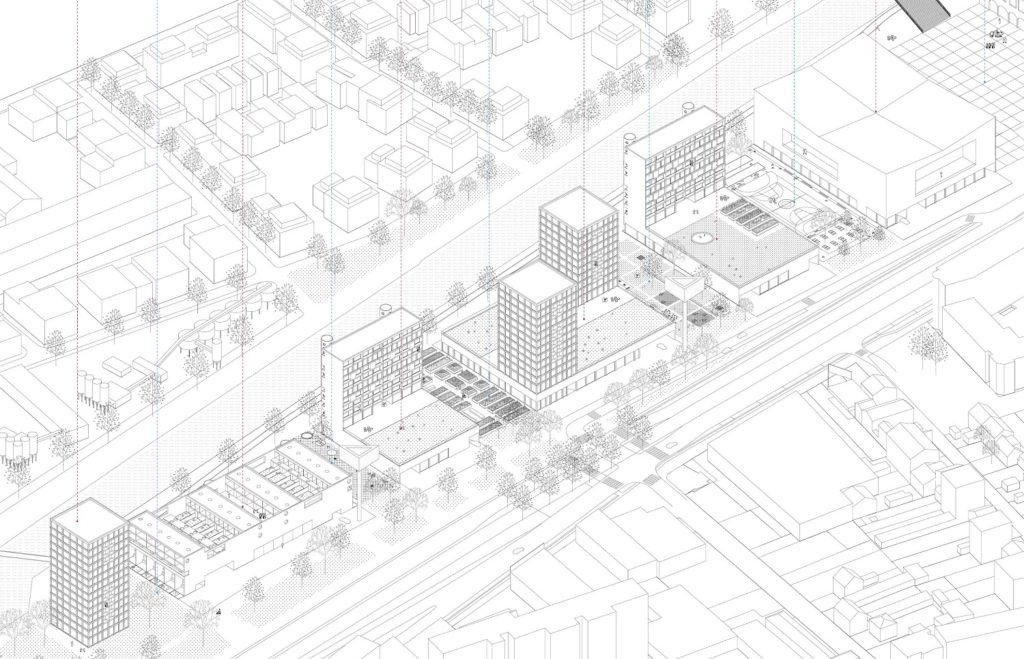
The clustered car-dependent retail-fabric of the avenue Gallieni is unique in the region and is likely to continue to serve its purpose for a long time to come. The new public transport connections, however, holds the potential of offering alternatives to car-users. Home-deliveries, rentals and taxis are services which many companies already provide.
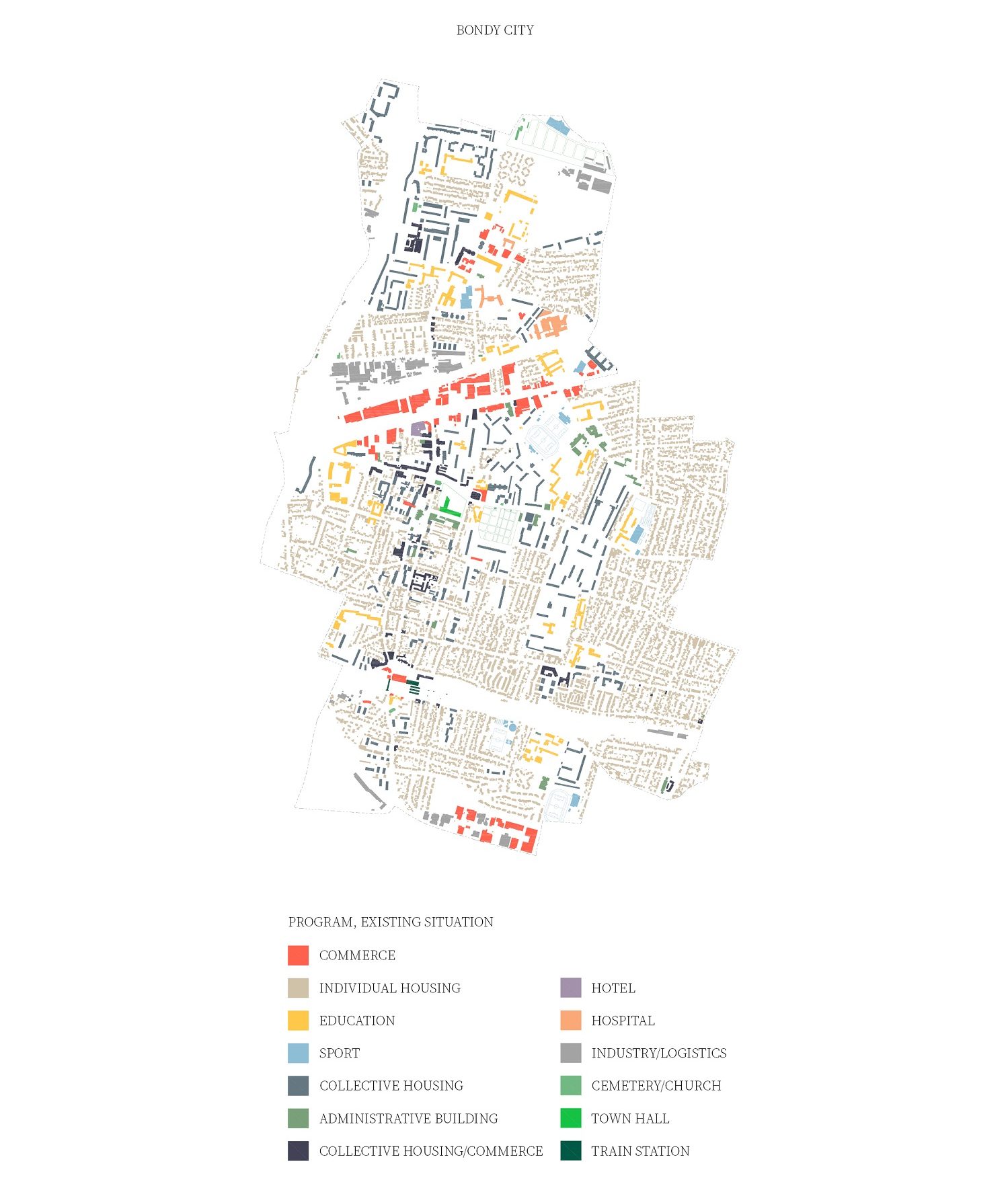
Bondy is clustered around two essential axes. The Rue Roger Sanlegro connects the station to the bridge over the canal to continue into the Route D’Aulnay on the other side. Alongside this axis connections can be found to the town hall, church, library, public greenery, cinema, and small local businesses. The other axis is the canal bordered by the avenue Gallieni. The potential of both axes working as vital structural elements in the city is being overshadowed by the lack of qualitative public space, permeability and human scale of the project site.
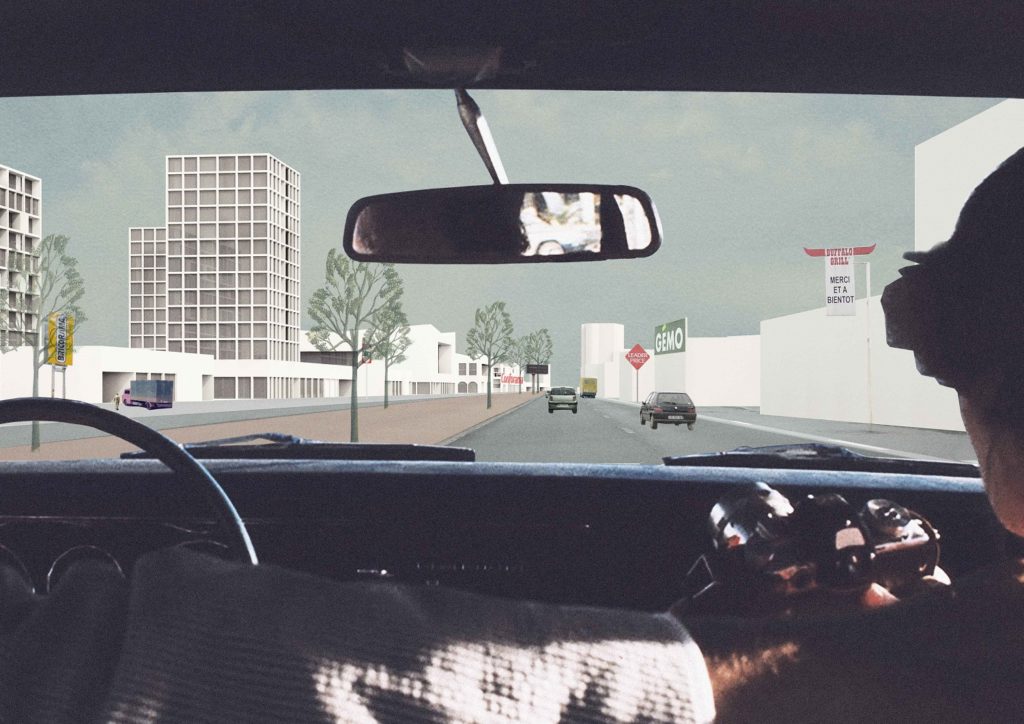
Master plan
The urban plan is no tabula rasa approach but takes into account the complex conditions of the site. The existing parcel layout is reincorporated. The plan is not intended to be constructed in a predefined order, nor does the project need to be completed for it to work. Each element is powerful enough to generate a positive change without disrupting the existing fabric.
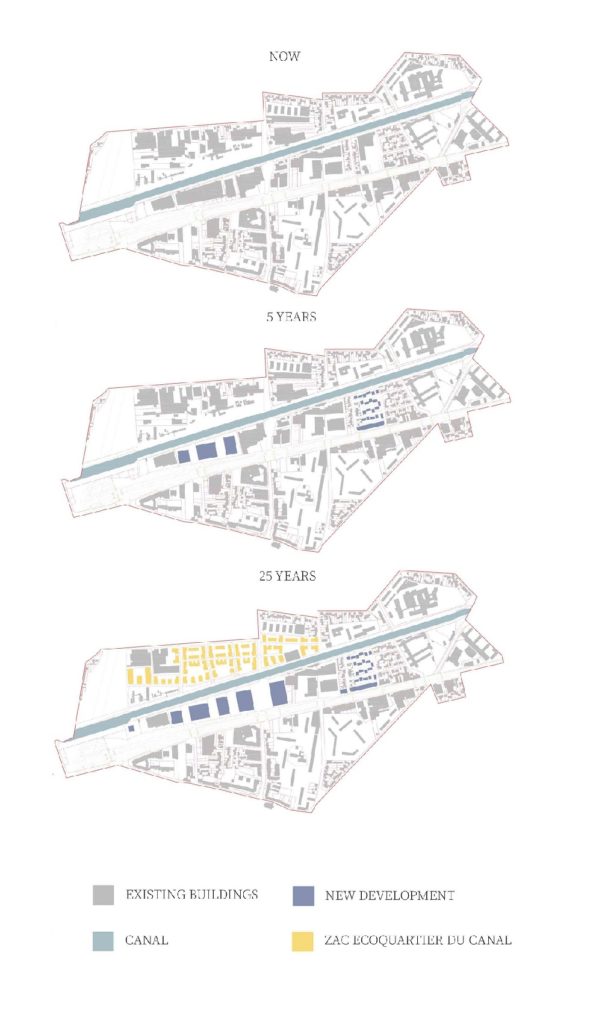
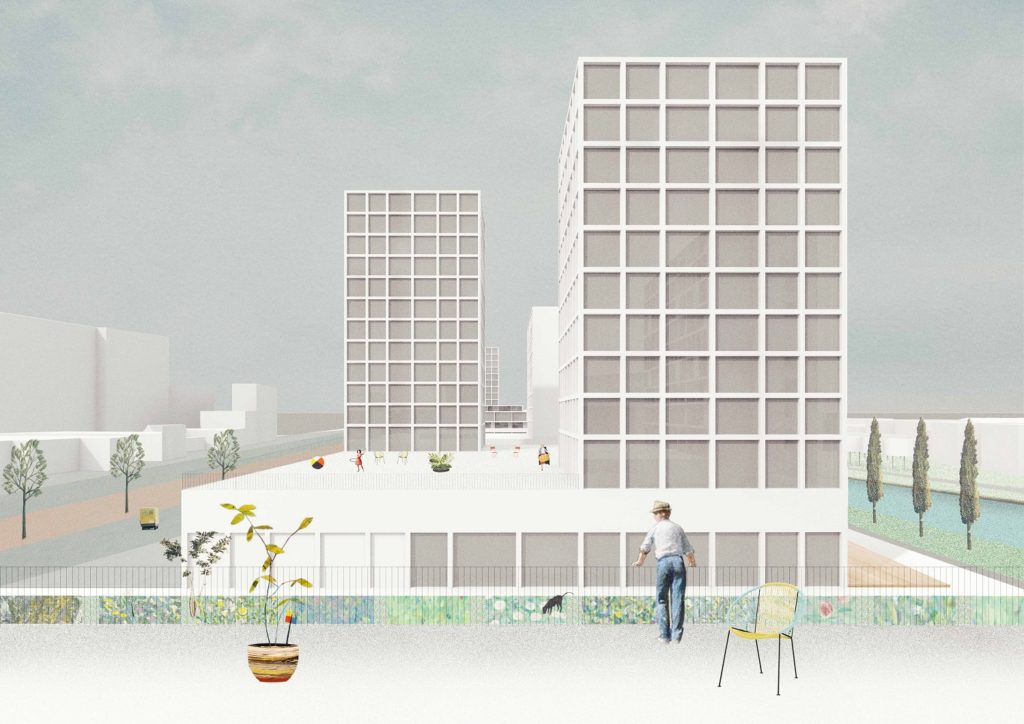
Generating space
One of the site’s fundamental problems is that the commercial developments form a wall towards the avenue Gallieni, making the canal hidden away and hard to reach from the town centre. All the retail units are surrounded by a parking lot and a fence and are often build on the edge of the plot. To counter these reoccurring problems, we propose a set of rules applied in case of new developments.
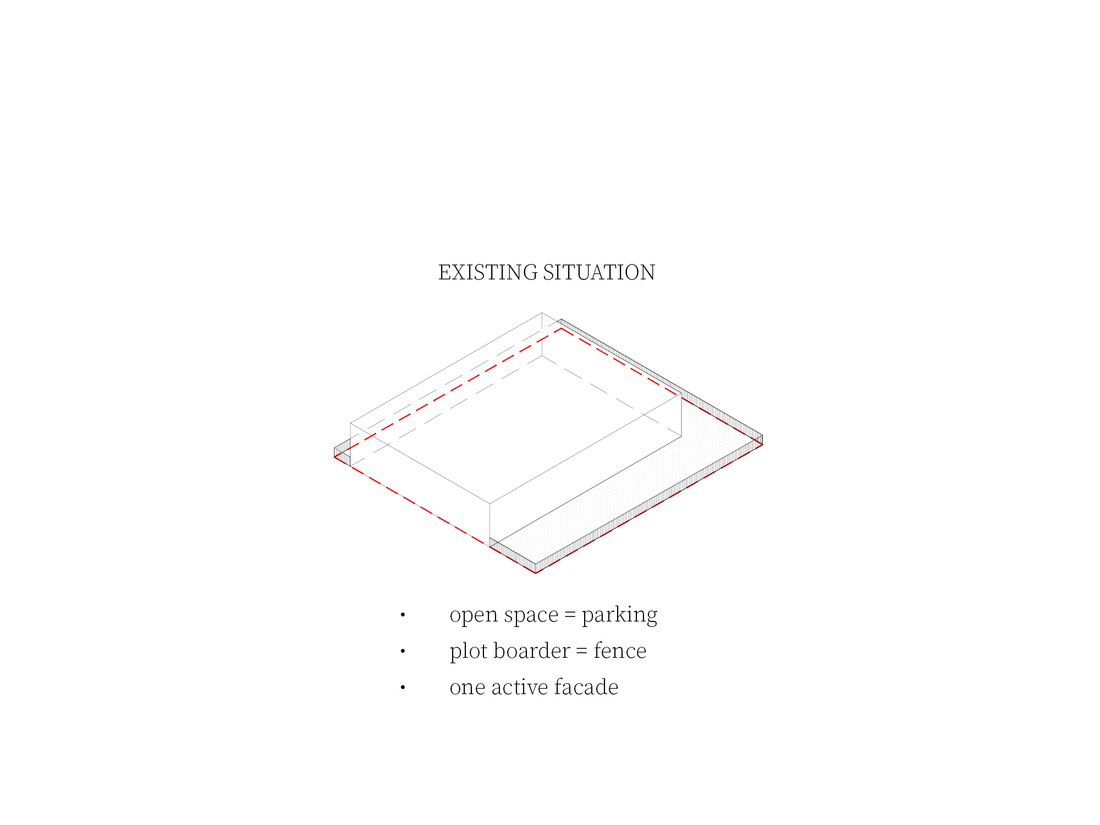
- Parcels smaller than 5000m² cannot be redeveloped when becoming vacant unless joined together with bordering plots.
- New developments have to keep a minimum distance of 12,5 m from the bordering plot of another occupant.
- Parking and technical installations have to be within the outlines of the building.
- Parking entrance and logistics have to be located at the front-facing avenue Gallieni.
The freed up strips of land in between the new developments will be made public. In this way, the area opens up to the canal and reconnects with the city.
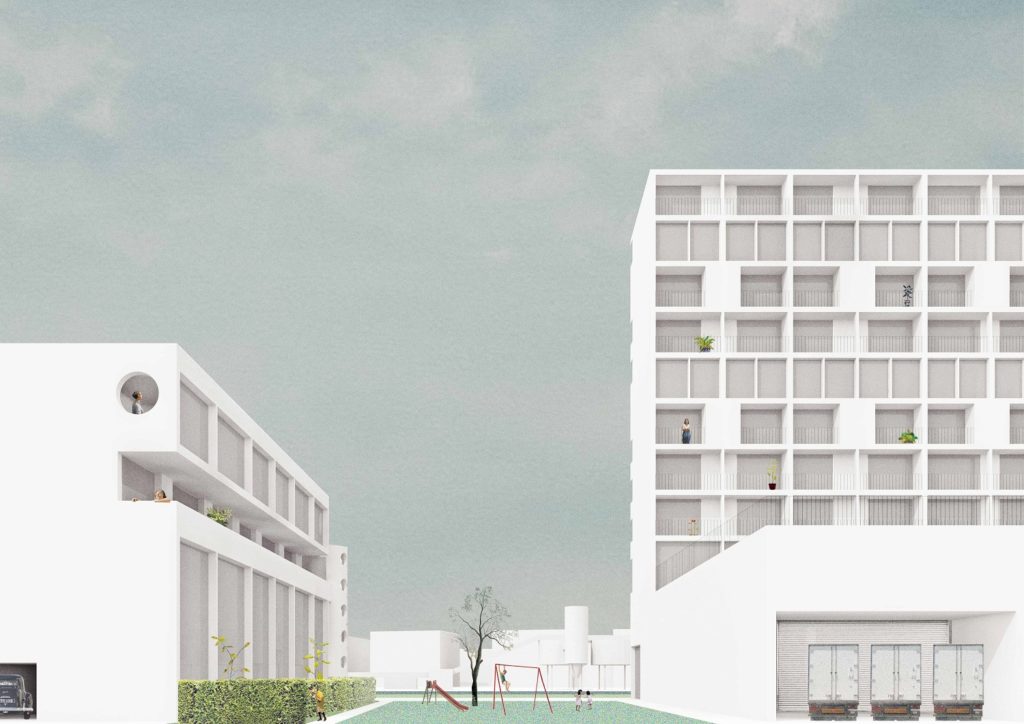
Hybrids
The roof and sides of the retail buildings can be developed as complementary functions. In this way both the high land prices can be met, and the freed up strips don’t become an unsafe wasteland in between two blind walls. A wide variety of housing types can be developed to create a healthy social mixture of inhabitants in time. Housing type 1 is a combination of ground-bound starter units and rooftop houses with gardens for the nuclear family. Housing type 2 offers more luxury apartments with one until three bedrooms. Housing type 3 is a combination of duplexes for young families and flats for the elderly.
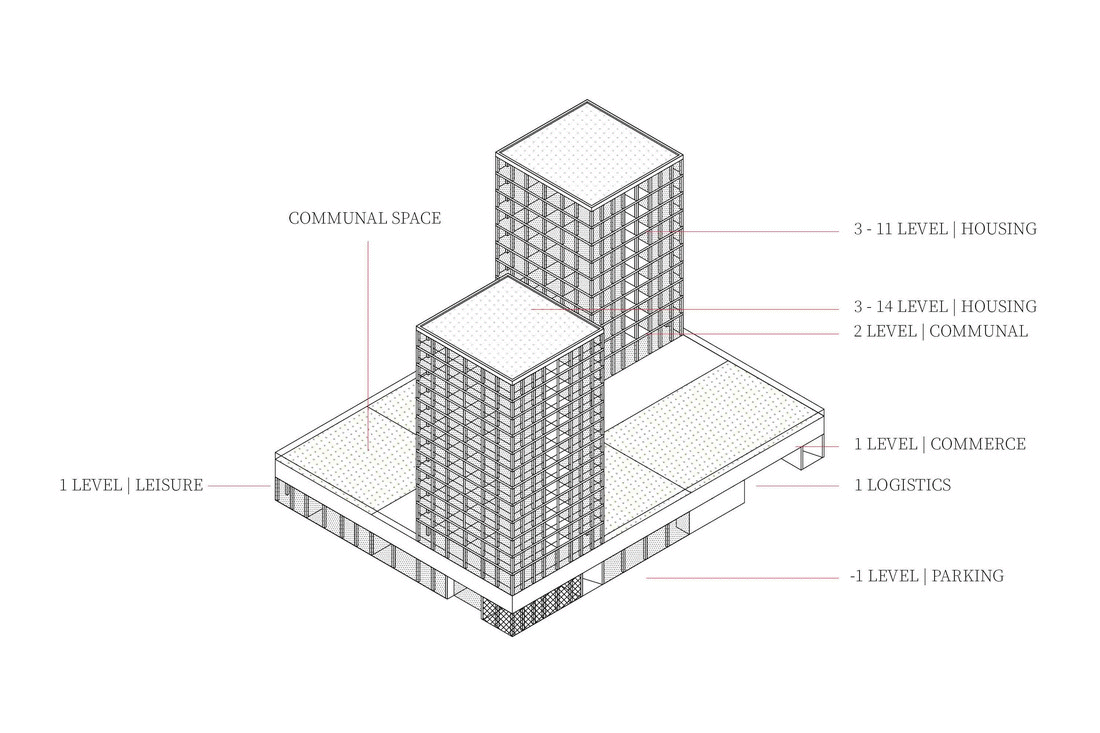
Omni-directional buildings
The front-facing the street is reserved for large retail. The sides will be developed as housing and offices. The spaces in the back facing the canal are available for bicycle storage, hobbyists and leisure activities.
Diverse public space
The new public spaces in between the buildings have a specific use that can be adjusted to the public’s needs. They are reserved for playgrounds, parks, allotments and sports fields.

Social participation and control
To bring a level of social control to the newly created public spaces, the entrances of both ground-bound- and stacked housing-typologies are facing the sides. By letting the inhabitants participate and care for the spaces, we hope that they will become a collective responsibility instead of an unnecessary worry for the municipality.
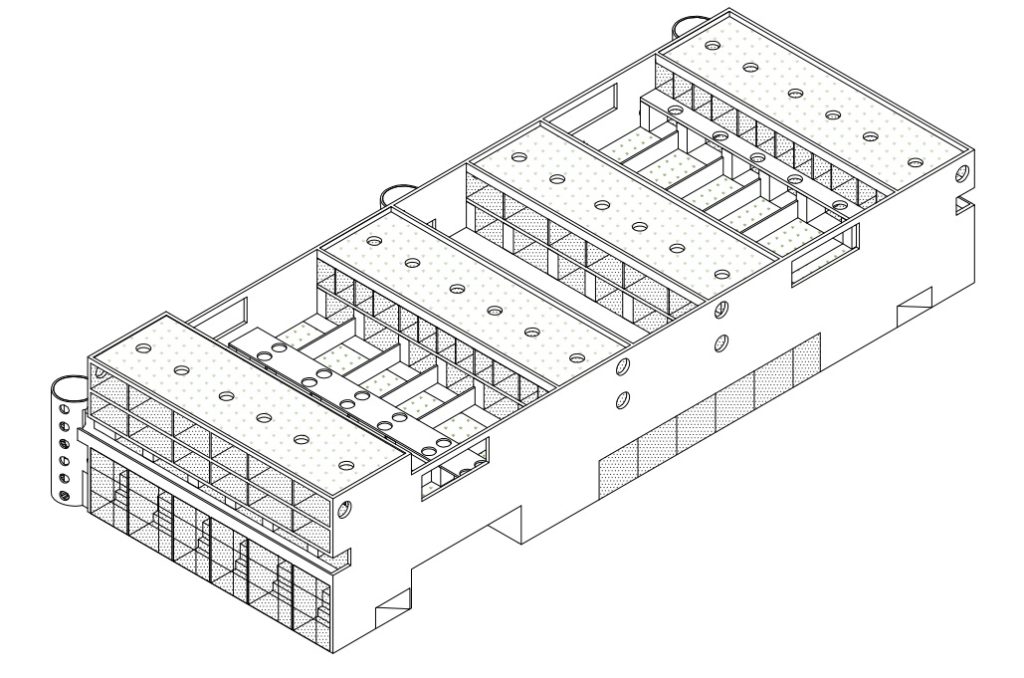
Machines à habiter
Because of the volume and external circulation shafts, the buildings have a rough exterior that fits well with the industrial environment on the other side of the canal. The rough exterior is in contrast to warm living spaces in direct connection to the rooftop gardens and communal greenery. The variety of different typologies creates a lively skyline.
